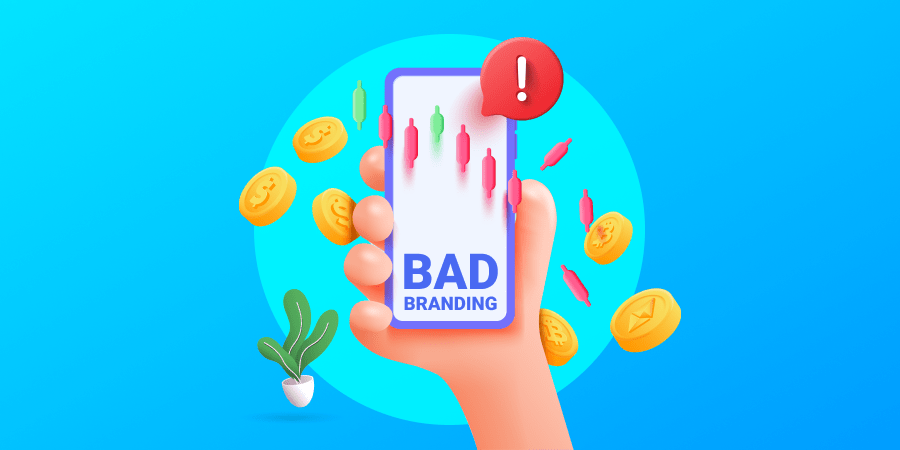Crafting a compelling and emotional narrative is not just an exciting way to convey the who and why behind your brand — it is also a powerful conversion tool that can drive sales.
A great example of the sheer force of brand storytelling can be seen in JP Morgan Chase’s example of a credit card geared towards emotionally engaging millennials.
After introducing the card, they saw an increase of 70% in use and 40% in new account growth.
A powerful brand story however, doesn’t happen by chance.
Keep reading to find out how to effectively craft your brand’s story and reach your audience.
What Is Brand Storytelling?
Brand storytelling is the process of telling your brand’s story to build an emotional connection with your target audience.
It combines your mission, vision and history into an emotion-evoking tale of who you are and why your audience should care.
The Impact Of Brand Storytelling
While you may think that you’re writing your story merely to present your business and products, brand storytelling is much more than that.
Telling an effective story means leaving a lasting impression on your potential customers.
In fact, people are 22 times more likely to remember stories than facts and figures alone.
What does this mean for your brand?
If your business has a relatable story — you are 22 times more likely to linger in your audience’s mind.
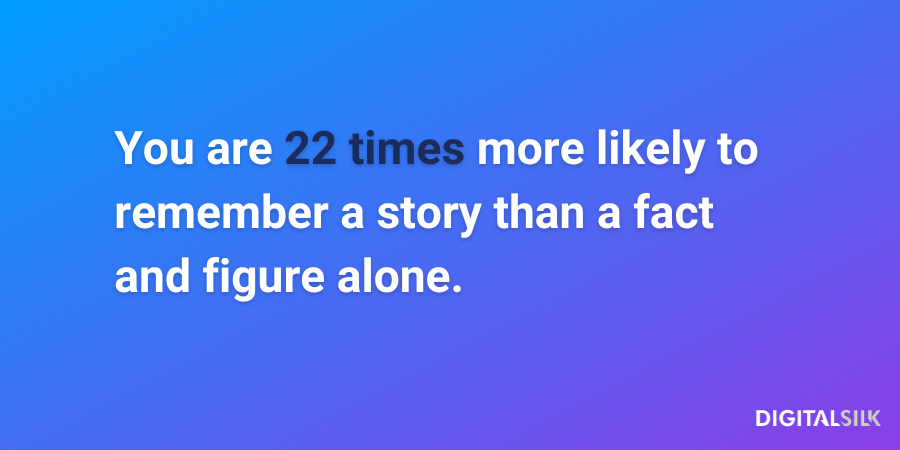
Key Elements of Successful Brand Storytelling
Below are some of the key elements of every successful brand storytelling campaign.
Emotional Connection
Emotions influence decision-making and foster a deeper connection between your brand and its target audience.
They also improve sales: customers who are emotionally connected to a brand have a 306% higher lifetime value, which means that they have a higher net profit contributed to the whole future relationship with a customer.
Effective brand storytelling directly translates into revenue.
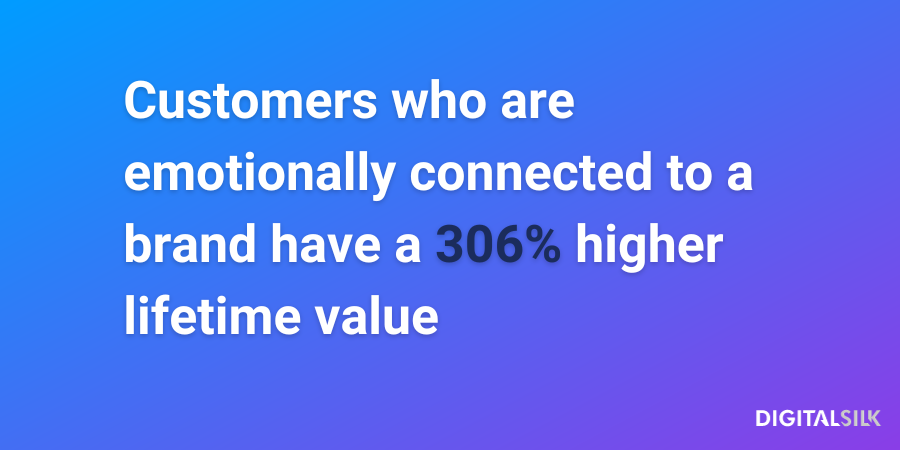
Authenticity
Consumers no longer base their decisions solely on the service or product alone.
Instead, consumers shop from companies that have similar views: 46% of shoppers research the brand and its values before making a purchase.
In a recent study, 56% of respondents said they would be willing to take a pay cut to work for a company whose values align with their own and 40% would consider quitting their job if the company took a political stance they disagree with.
In other words, transparently sharing your values is not just an integrity move. Rather, it is something that will allow you to connect to your target audience and boost sales.
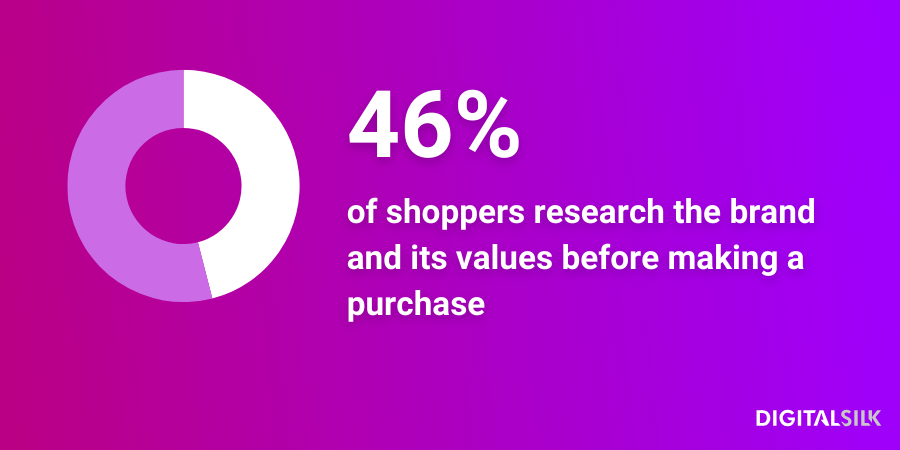
Relatability
Relatability creates a bridge between your company and its customers, turning them from passive consumers into active participants in your brand journey.
By highlighting shared experiences, challenges or aspirations, you can foster a sense of community and turn your customers into a tribe of supporters.
Consistency
On average, it takes five to seven interactions with your brand before your audience will remember it.
From the language and colors you are using, to visual and design elements, you want to ensure to give your customers a consistent experience that will instantly make you recognizable in your customers’ eyes.
Clarity
Clarity is essential in brand storytelling to effectively convey your message.
A clear and concise narrative helps your audience understand the values, purpose and offerings of your brand.
To effectively convey these details, discuss:
- Who are you?
- What do you do?
- Why was your company created?
Top Brand Storytelling Examples
Here at Digital Silk, we grow brands online.
From custom design and development, to branding and search engine optimization, all our expertise is geared towards delivering measurable results to our clients.
Effectively telling your brand’s story can be a way to emotionally engage your audience and can directly translate into sales.
Below, we’ve highlighted some of our favorite examples of how powerful brand stories can convert consumers and directly translate into additional revenue.
Example 1. Apple: Think Different
In 1990s, when Apple was facing a declining market share, they launched their “Think Different” campaign.
The company needed a fresh approach to reposition themselves on the market and engage their audience.
The campaign celebrated individuals who had made a significant impact on the world by thinking differently and challenging the status quo.
It honored innovators, artists, scientists and visionaries from various fields.
Some of the famous figures featured in the campaign included Albert Einstein, Mahatma Gandhi, Martin Luther King Jr., and Pablo Picasso.
This campaign wasn’t focused on highlighting Apple’s products or services.
Instead, the focus was conveying Apple’s innovative values and ideals to their target audience.
The “Think Different” resulted in Apple’s consumers rallying behind the brand and seeing themselves as the “crazy ones” and “ones that will change the world.”
While we can argue that Apple did change the world, we can measure the company’s value after the commercial aired: within a year of the “Think Different” campaign, Apple stock value tripled.
You can see the “Think Different” video below.
Example 2. Airbnb: Belong Anywhere
In the words of Brian Chesky, CEO at Airbnb — a hotel industry disruptor and currently the 169th most valuable company in the world:
“For so long, people thought Airbnb was about renting houses. But really, we’re about home. You see, a house is just a space, but a home is where you belong. And what makes this global community so special is that for the very first time, you can belong anywhere.”
The core message behind Chesky’s words is that Airbnb offers more than just a place to stay.
It is an opportunity for travelers to immerse themselves in the local culture, connect with their hosts and feel like they belong, no matter where they go.
Airbnb’s branding narrative revolves around the idea that travelling is more than mere transaction of staying in a hotel room.
Instead, travel is about experiences, relationships and cultural immersion.
So, how does Airbnb tell the story of belonging anywhere?
In 2016, Airbnb included the “Experiences” feature on their website.
It shows the curated activities the hosts can offer to their guests, allowing the visitors to feel and learn about the place they will be staying in.
From making the Fettuccine pasta and Tiramisu cooking class in Rome to a customized Tokyo trip with a local advisor, these activities let the potential visitors experience the slice of life in cities they will travel to, getting them excited long before they board on a plane.
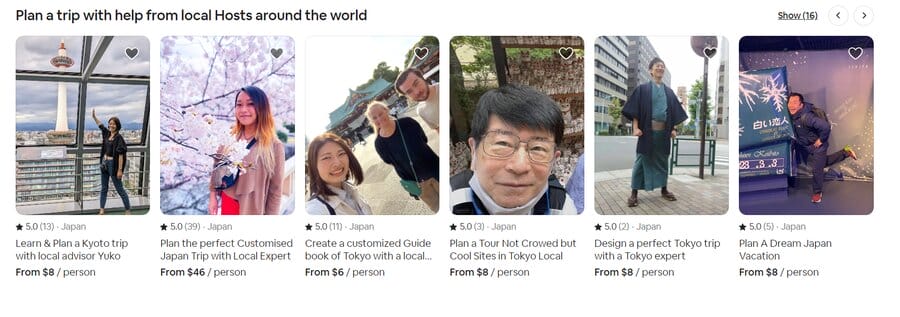
Example 3. Volvo: Safety
Volvo, renowned for its commitment to safety, has elevated automotive standards by placing the well-being of drivers and passengers at the forefront of their brand identity and their marketing efforts.
With a history deeply rooted in pioneering safety innovations, Volvo consistently emphasizes its dedication to creating vehicles that prioritize the protection of lives on the road instead of mere specs.
You can see how Volvo demonstrates their commitment to safety in the video below.
Volvo campaigns focus on the raw emotions of individuals who survived car accidents thanks to the seatbelt they invented.
The company’s branding revolves around telling the tale of safety and the horrific ordeal the individuals in the commercial went through all to get their message across and emotionally engage their audience.
The focus is not, once again, on the product or service — the focus is on the people.
Brand Storytelling in 7 Steps
While not every brand can tell its story in the same way, there are actionable steps you can take to effectively tell your brand’s story.
Brand storytelling can act as a foundation for your future marketing efforts, so by telling your brand’s story you are setting the foundations for your future marketing campaigns.
Take a look at the seven steps of crafting a powerful story of your brand below.
Step 1. Understand Your Audience
As seen with Airbnb and most other successful brands, understanding your audience is key.
The first step in understanding your audience is understanding your brand and what it stands for.
After researching your target audience, create a buyer persona by identifying:
- Audience demographics (age, gender, location, education)
- Audience psychographics (values and beliefs)
- Audience pain points (the challenges your buyer persona is facing)
- Audience culture (cultural relevance, don’t insensitively alienate a part of your audience)
- Ideal marketing channels (where and how your audience consumes content)
After identifying the above, you can develop a brand story following Airbnb’s or Apple’s footsteps.
Step 2. Define Your Brand Values
Clearly defining your brand values forms the foundation of a compelling narrative. They serve as a foundation for how a brand interacts with its employees, customers, partners, and the wider community.
Brand values often encompass a range of principles, such as integrity, transparency, innovation, social responsibility, and customer-centricity.
Articulating these values not only provides a roadmap for your storytelling but also communicates the ethos that sets your brand apart.
Consistency in upholding these values throughout your narrative reinforces authenticity and builds trust with your audience.
Step 3. Craft a Compelling Narrative
Crafting a compelling narrative involves weaving a story that captivates, resonates and inspires.
Take your audience on a journey that transcends the features of your products or services.
Highlight the challenges, triumphs and evolution of your brand, as well as your values and mission and how they affected your brand’s story.
Make your customers an active participant in your journey, whether they are visitors, rebels or heroes of your story!
Step 4. Communicate The Problem You Solve
You created your business because you recognized the need to solve a problem that exists in the market.
You know it but your audience may not.
Effective brand storytelling includes communicating what your company does: what is the problem that your business solves and how can you help your potential customers?
Answering this question doesn’t only provide a solution to your audience’s pain points.
It also gives you an opportunity to introduce your origin story.
Step 5. Communicate Your Origin Story
You know your company’s origin story — you just need to tell it to your audience.
You recognized an existing problem on the market and you were passionate about delivering your product or service to solve it.
In storytelling, origins are important to better understand the characters that appear in the story.
In brand storytelling, you want to focus on the values and beliefs that influenced you to start your business.
When you define them, you can share the process of how your business became, the ups and downs that led you to where you are.
In doing so, you will give your consumers something to connect to while crafting and delivering your brand’s origin.
Step 6. Remain Authentic
Your brand values and story define the essence of your company.
You engage your audience through your messaging and emotional storytelling.
By making your brand’s story known, preaching it through different channels and including your customers in the process of sharing it, you are ensuring that your potential customers know what you stand for.
You can achieve this effect by including testimonials, social proof or other methods that demonstrate your commitment to your values.
In doing so, you will foster a trusting relationship with your consumers and grow with them into a community connected through shared values and beliefs.
Step 7. Use Visuals
Vision trumps all other senses.
According to a study, three days after learning about a topic, you will remember only 10% of it.
However, if you learn about it through a visual, in three days, you will remember 65% of it.
Incorporating visual elements when you’re telling your brand’s story means lingering in your audience’s minds more than six times longer as opposed to when you’re not using visuals.
Consistent visual elements create a cohesive and memorable brand image, complementing the narrative and making it more compelling and shareable across various platforms.
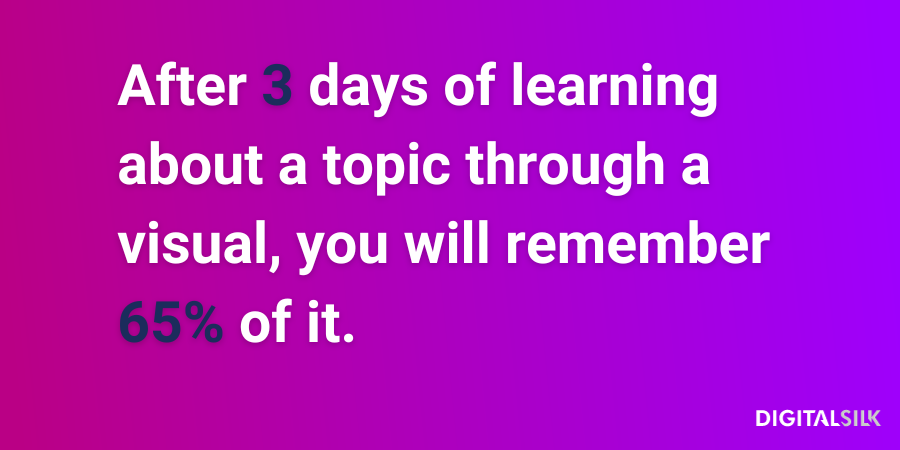
Tell Your Brand’s Story With Digital Silk
Here at Digital Silk, we are a full-service digital marketing agency that helps brands grow online by delivering comprehensive branding services, as well as marketing, design, development and beyond.
Our experts develop custom branding strategies , while our designers craft custom visual elements to make your brand unique and recognizable.
But don’t take our word for it.
Take look at some of our branding case studies to see how we take ownership of every project and drive measurable results for each of our clients.
Contact us at (800) 206-9413 or complete our Request a Quote form below to set up a consultation and begin your branding journey with Digital Silk.
"*" indicates required fields





